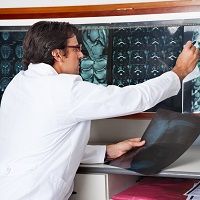Article
Study Endorses COPD Imaging for Diagnosis, Treatment
Author(s):
A statement released by the Radiological Society of North America (RSNA) endorsed the use of magnetic resonance imaging (MRI), computed tomography (CT), and other imaging techniques for improving the quality of life and treatment of chronic obstructive pulmonary disease (COPD) patients.

A statement released by the Radiological Society of North America (RSNA) endorsed the use of magnetic resonance imaging (MRI), computed tomography (CT), and other imaging techniques for improving the quality of life and treatment of patients with chronic obstructive pulmonary disease (COPD).
Commonly detected through spirometry, COPD affects more than 65 million people worldwide, according to the World Health Organization (WHO). However, the test, which determines lung function by having the patient breathe into a tube for one second, has several shortcomings. For example, forced expiratory volume (FEV1) — the score provided by the assessment – does not provide a full glimpse into the patient's’ lungs and exercise capabilities.
"COPD is a very heterogeneous disease," the study co-author, Grace Parraga, PhD, from the Robarts Research Institute in London, Ontario, explained. "Patients are classified based on spirometry, but patients with the same air flow may have different symptoms and significant variation in how much regular activity they can perform, such as walking to their car or up the stairs in their home."
To determine the efficacy of imaging, the team conducted a conventional CT and inhaled noble gas MRI, on 116 COPD patients, 80 of which had a less aggressive form of the disease. The participants also completed lung capacity testing, six-minute walks, brief exercise, and a quality of life survey.
These assessments, which determined how much air was occupying the lungs, showed that patients with mild-to-moderate COPD with irregular FEV1 measurements, their MRI measurements of emphysema were heavily tied to limited exercise. Furthermore, CT and MRI scans also helped to highlight and clarify symptoms.
“In patients with mild-to-moderate COPD, MRI imaging emphysema measurements played a dominant role in the expression of exercise limitation, while both CT and MR imaging measurements of emphysema explained symptoms,” the authors reported in Radiology. “Imaging measurements of emphysema help identify and determine disease phenotype in patients with mild chronic obstructive pulmonary disease (COPD) in whom FEV1 is modestly abnormal and contribute to the understanding of the sources or triggers for clinically important outcomes such as the six minute walking distance (6MWD) and COPD symptoms (e.g., cough, sputum production, wheeze, and breathlessness).”
In light of their discovery, the investigators want to observe how radiology would fare in identifying and treating other pulmonary conditions such as asthma and cystic fibrosis.




